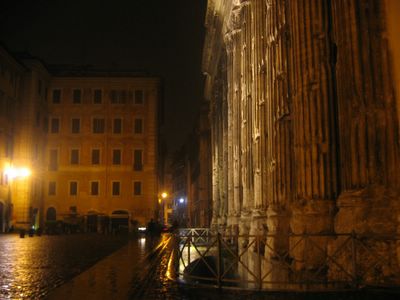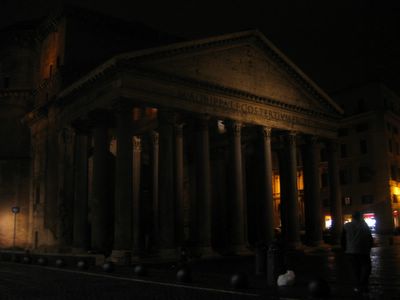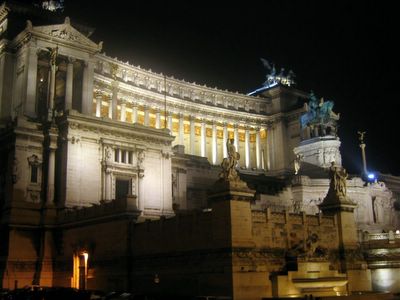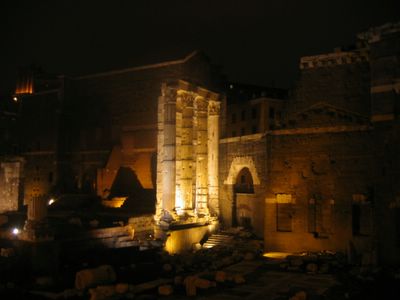
the temple of the pagan gods which is now an art gallery
On our first night, we wander on foot from one place to another, enjoying the pleasure of having Rome's great sights largely to ourselves. Well, I enjoy myself more. Akbar sneezes and shivers the whole time, and we end up going to a pharmacy to spend our last ten euros on aspirin. The only other customer there is a handsome and dapper young colombian gentleman who should surely be seducing impressionable university girls somewhere, instead of ineptly and unsuccessfully attempting at two in the morning to purchase the right medicine for a wife he is too young to have, but that is who he says is lying injured in the hotel room. We place our lingual expertise at his service (we say "antiseptic" to the pharmacist), and send him on his way a relieved man.

the pantheon, also once a temple of the pagan gods, and which is now technically a church
The Jesuits are a christian brotherhood required to take a perpetual vow of poverty on joining, but nevertheless, the tomb in Rome of their founder Saint Ignatius Loyola is topped with 'the largest lapis lazuli in existence'. We are not naive enough to be surprised, but it makes us think.
The churches in Rome are huge, impressive structures, expensive to build, filled with treasures of precious metal, sculpture and painting, and decorated by the leading artists of their day. How did they pay for all this, where did the money come from? How much of it was the tithe? what were (and are) the church's leading sources of revenue? What is the Vatican's stock portfolio?

the 19th century Vittorio Emmanuele Monument, also known as "the typewriter" and "the wedding cake"
In honour of the dead pope, Italy is planning to rename Termini, Rome's central train station, afer him. Good idea. Here's a building which is nothing if not a reminder of Italy's fascist past - an oversized white structure of colossal proportions and lacking in any human warmth - built in Mussolini's time. Now, we will be reminded of the church's historical support and collaboration with forces of intolerance everytime we turn up in Rome - and will be wiser for it. But why would the vatican agree to this? Then again, why not, the main altar in the church of saint peter was made of bronze looted from a two thousand year old roman temple on the specific instructions of the then pope, Urban VIII aka Maffeo Barberini. As the pun goes, quod non fecerunt barbari, fecerunt Barberini. What the Barbarians did not do, Barberini did.

ruins of something or the other, the forum

Colosseum, Rome
